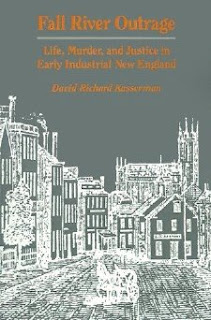 Most True Crime works published prior to 1850 were really half sermon, half cautionary tale. Their basic message was that the devil motivated the perpetrators, and criminal impulses could be overcome if one obeyed their parents and the Ten Commandments. Mitigating circumstances were nonexistant, and sympathy for the criminal out of the question.
Most True Crime works published prior to 1850 were really half sermon, half cautionary tale. Their basic message was that the devil motivated the perpetrators, and criminal impulses could be overcome if one obeyed their parents and the Ten Commandments. Mitigating circumstances were nonexistant, and sympathy for the criminal out of the question.Last weekend, while browsing Google's database of digitized public domain material, I found a 62 page volume titled EUGENE ARAM who was executed for the murder of Daniel Clark in 1759. It was published in England in 1838, and so popular during its day that two editions were released. What made the book comparatively unique was that the author, Norrisson Scatcherd, did not write it to preach or condemn. On the contrary, he became fascinated by Aram's story while still a boy, and traces of that seminal awe can be detected throughout the book.
"I became seized with an insatiable curiousity to know something about that extraordinary man (Aram) and the particulars about his case," Scatcherd wrote in the preface. He recalled being laughed at "for hunting after old men and women, to pick up the fruits of their observations, or the traditions of their forefathers." He spoke to an old woman who shook hands with Aram while he was awaiting execution at York Castle, and a man whose relative acted as a maid to the widow of Daniel Clark, Aram's alleged victim.
In my opinion, Norrisson Scatcherd was over a hundred years ahead of his time. He was an investigative writer before the term even existed, refusing to let religious dogma shape his perspective. He believed that Eugene Aram did not kill Daniel Clark, and defended his conclusion with facts taken from personal interviews and the trial transcript. I can understand why the reading public found his book so beguiling: instead of offering yet another execution sermon, Scatcherd breathed life into a man long since consigned to a murderer's grave.
EUGENE ARAM can be read online here. Both writers and fans of True Crime will enjoy this early example of the genre.

